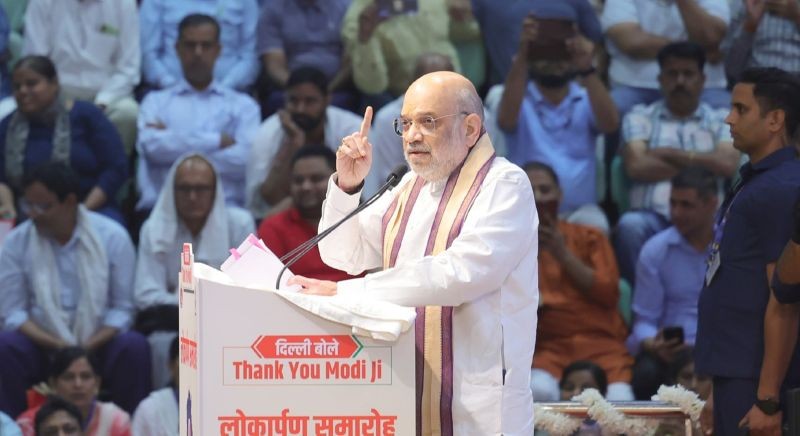'Unfortunate': Supreme Court on selective reveal of Air India crash probe report implying pilot's probable fault

New Delhi/IBNS: The Supreme Court on Monday called the selective reveal of the Air India plane crash probe report suggesting one of the pilots could be at fault "unfortunate", media reports said.
A top court bench of Justices Surya Kant and N Kotishwar Singh has stressed on the need to maintain an absolute privacy till the completion of the probe while hearing a plea seeking an independent, court-monitored probe into the crash that killed at least 260 people.
The bench has issued notices to the Centre as well as Directorate General of Civil Aviation (DGCA) asking for a response within two weeks on a plea filed by Safety Matters Foundation.
Senior advocate Prashant Bhushan, who appeared for the foundation, flagged the conflict of interest in the probe panel as it comprises three out of five people from DGCA, which has itself come under the scanner over the alleged negligence that apparently caused the crash.
The court acknowledged the demand for a fair probe but discouraged the revealing of information in the public domain prior to the completion of the probe.
"You want an impartial inquiry, and we understand it. But why do you want everything to come in the public domain?" the bench asked advocate Bhushan as quoted by Hindustan Times.
When advocate Bhushan insisted on the revealing of the flight data recorder, the court disapproved and said as quoted by the daily, "That can come only after the regular inquiry is over. It may not be advisable to make everything public at this stage."
When Bhushan said the probe report had selectively blamed the pilots, the court called it "unfortunate" and underlined the need for maintaining confidentiality.
Earlier, Civil Aviation Minister Ram Mohan Naidu had cautioned on jumping into conclusions from the preliminary report of probe into the fatal Air India crash.
"This is a preliminary report right now. From the ministry, we are analysing the report. I think it would be better if we can comment on it once the final report comes out. So we are coordinating with the AAIB also. We will be providing whatever support or resources the AAIB will be requiring... We are hoping that the final report comes out soon so that we can arrive at some conclusions," said the minister.
"I don't think we should jump into any conclusions on this. I truly believe we have the most wonderful workforce in terms of pilots and the crew in the whole world. I have to appreciate all the efforts the pilots and crew in this country are putting into aviation. They are the backbone and primary resource of civil aviation," he added.
#WATCH | Vizag | On AAIB's preliminary report on AI 171 crash, Union Civil Aviation Minister Ram Mohan Naidu Kinjarapu says, "This is a preliminary report, at the ministry we are analysing it...We are coordinating with AIBB for any support they need. We are hoping that the final… pic.twitter.com/UsJB7yD1Xj
— ANI (@ANI) July 12, 2025
The preliminary investigation conducted by India's Aircraft Accident Investigation Bureau, or AAIB, on the June 12 Air India Boeing 787 flight crash has revealed that both engines of the plane had shut down mid-air within seconds of take-off.
The report said: "The aircraft achieved the maximum recorded airspeed of 180 Knots IAS at about 08:08:42 UTC and immediately thereafter, the Engine 1 and Engine 2 fuel cutoff switches transitioned from RUN to CUTOFF position one after another with a time gap of 01 sec. The Engine N1 and N2 began to decrease from their take-off values as the fuel supply to the engines was cut off."
The report mentioned the cockpit voice recording showed one of the pilots is heard asking the other, 'why did he cutoff'.
"The other pilot responded that he did not do so," the report said.
The report further said: "As per the EAFR, the Engine 1 fuel cutoff switch transitioned from CUTOFF to RUN at about 08:08:52 UTC. The APU Inlet Door began opening at about 08:08:54 UTC, consistent with the APU Auto Start logic. Thereafter at 08:08:56 UTC the Engine 2 fuel cutoff switch also transitions from CUTOFF to RUN."
The report further said: "When fuel control switches are moved from CUTOFF to RUN while the aircraft is inflight, each engines full authority dual engine control (FADEC) automatically manages a relight and thrust recovery sequence of ignition and fuel introduction."
"The EGT was observed to be rising for both engines indicating relight. Engine 1’s core deceleration stopped, reversed and started to progress to recovery. Engine 2 was able to relight but could not arrest core speed deceleration and re-introduced fuel repeatedly to increase core speed acceleration and recovery. The EAFR recording stopped at 08:09:11 UTC," the report mentioned, sharing details about the aviation tragedy that left India shocked.
The report indicated that no immediate evidence was found that suggested there was a possible sabotage angle to the mishap.
Air India stands in solidarity with the families and those affected by the AI171 accident. We continue to mourn the loss and are fully committed to providing support during this difficult time.
— Air India (@airindia) July 11, 2025
We acknowledge receipt of the preliminary report released by the Aircraft Accident…
On June 12, a London-bound Air India Boeing Dreamliner flight crashed into a medical college hostel soon after takeoff near the Ahmedabad airport, killing 260 people including on-ground people.
241 out of 242 onboard passengers and crew members were killed in the crash, which is one of the country's worst aviation tragedies.
One person, the passenger of seat No. 11A, survived the crash miraculously.





